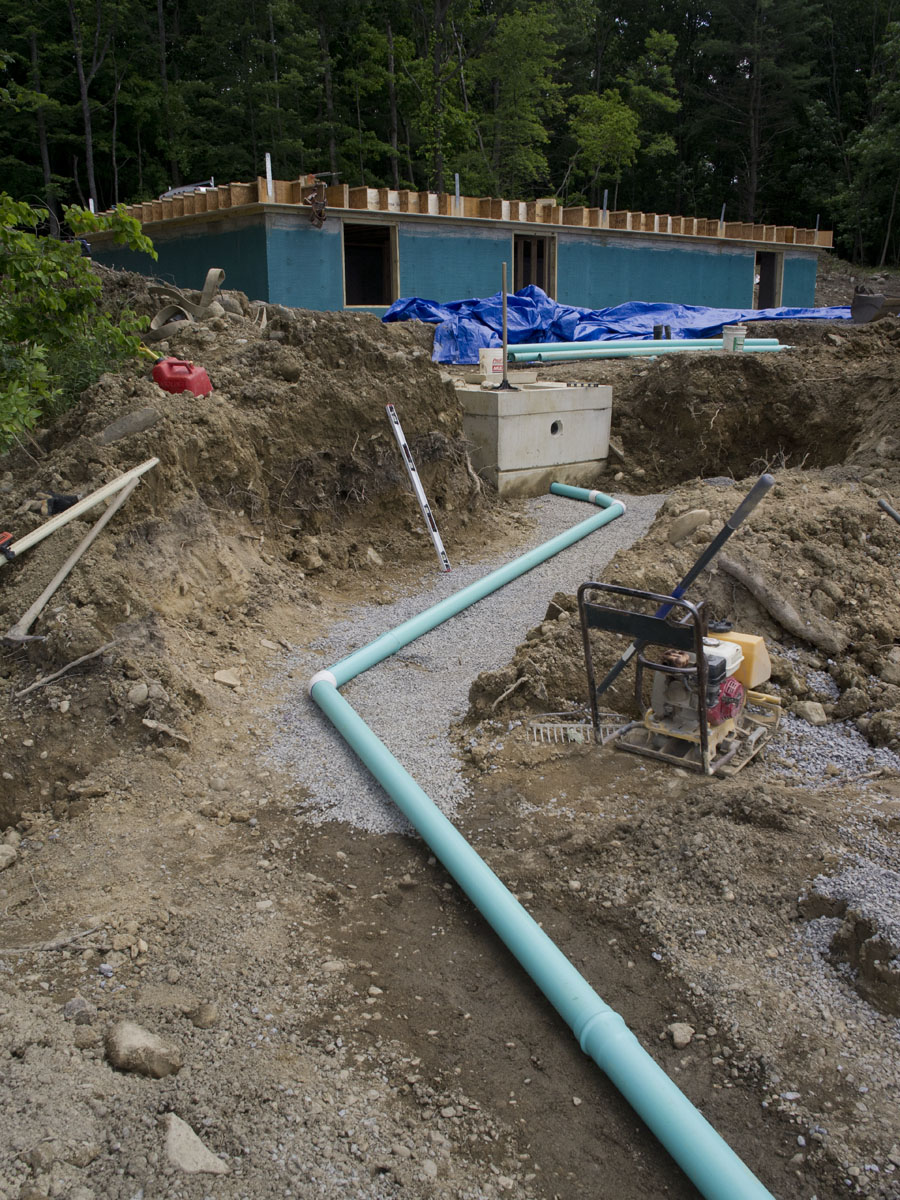 From the Flout dosing tank.
From the Flout dosing tank.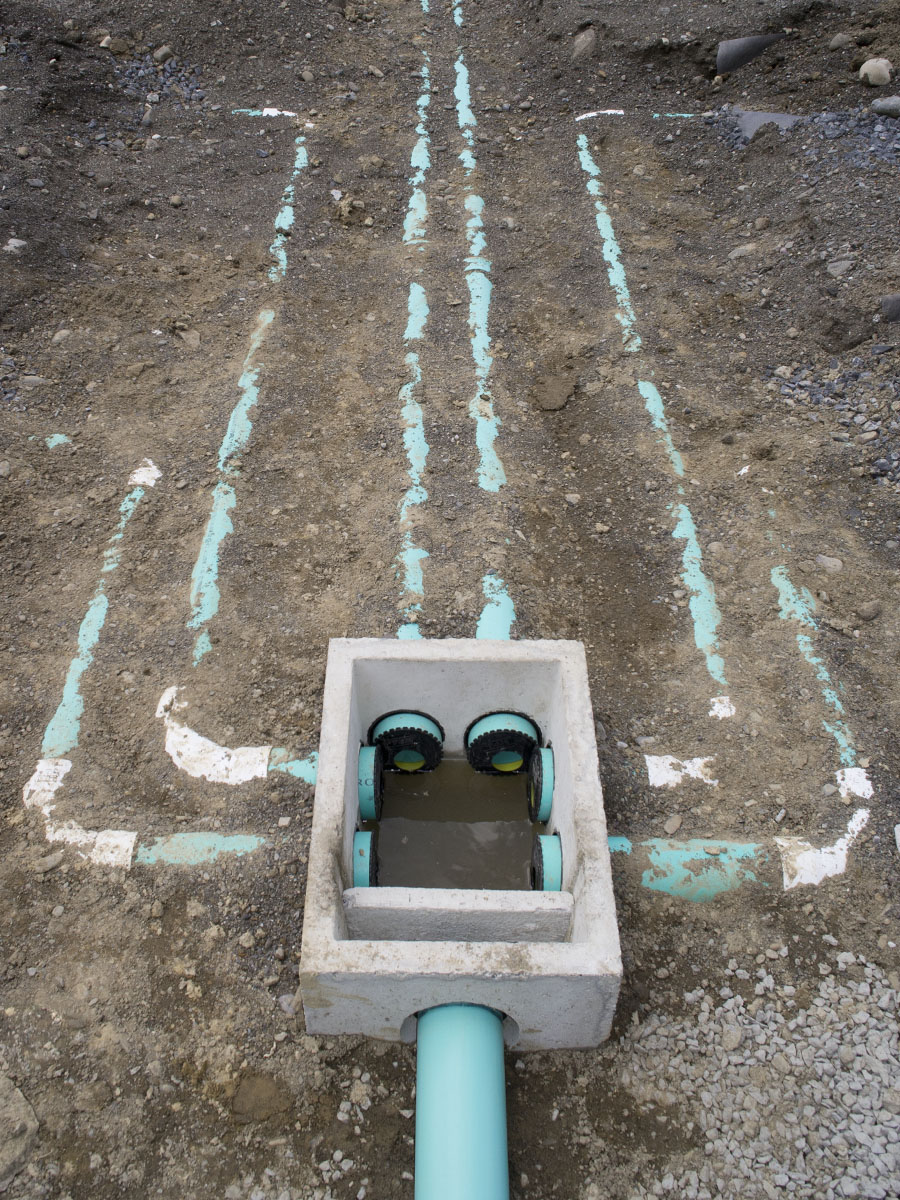 Into our new d-box
Into our new d-box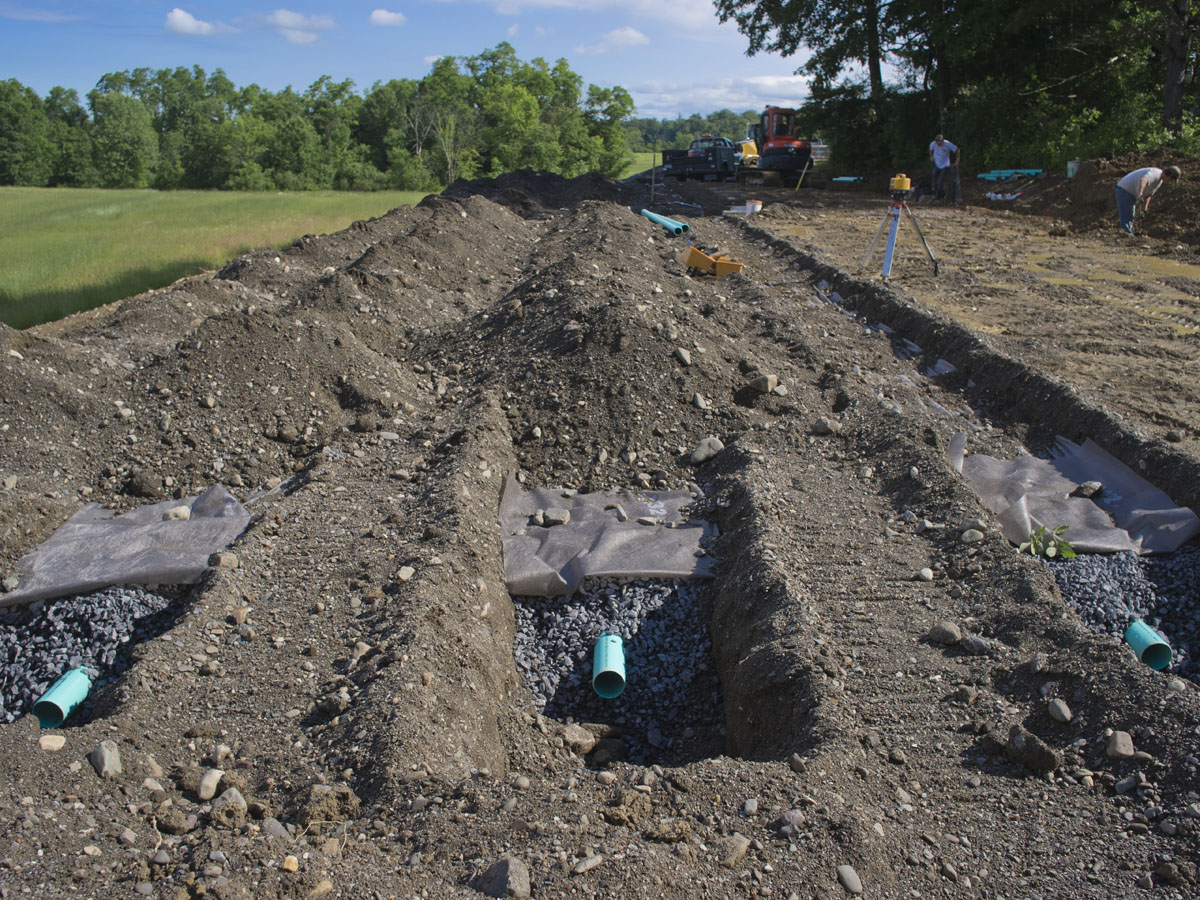 Then into the perfectly balanced raised bed gravel.
Then into the perfectly balanced raised bed gravel.

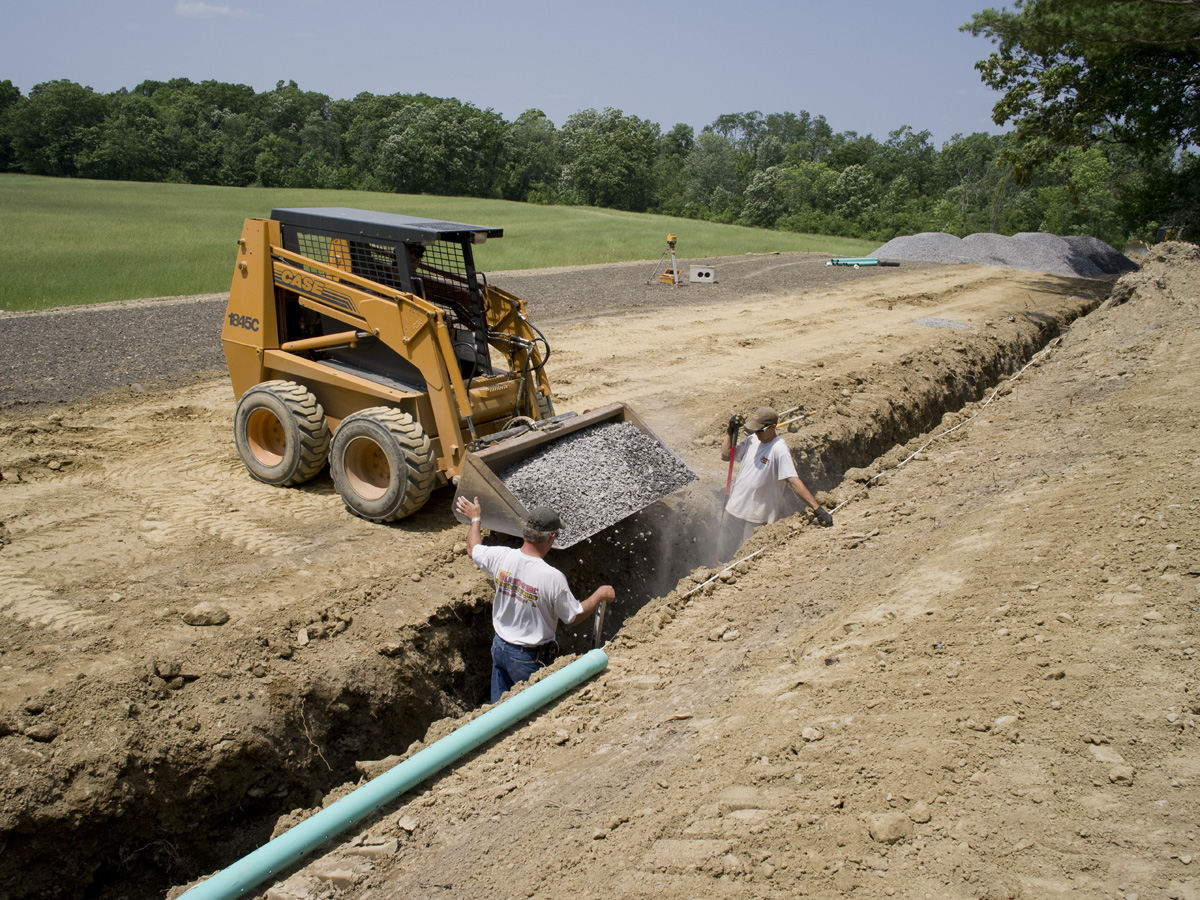 This drainage trench will help to keep the gravel dry in the raised bed septic system. It will catch and divert water from the house site so it runs away from the septic field.
This drainage trench will help to keep the gravel dry in the raised bed septic system. It will catch and divert water from the house site so it runs away from the septic field. 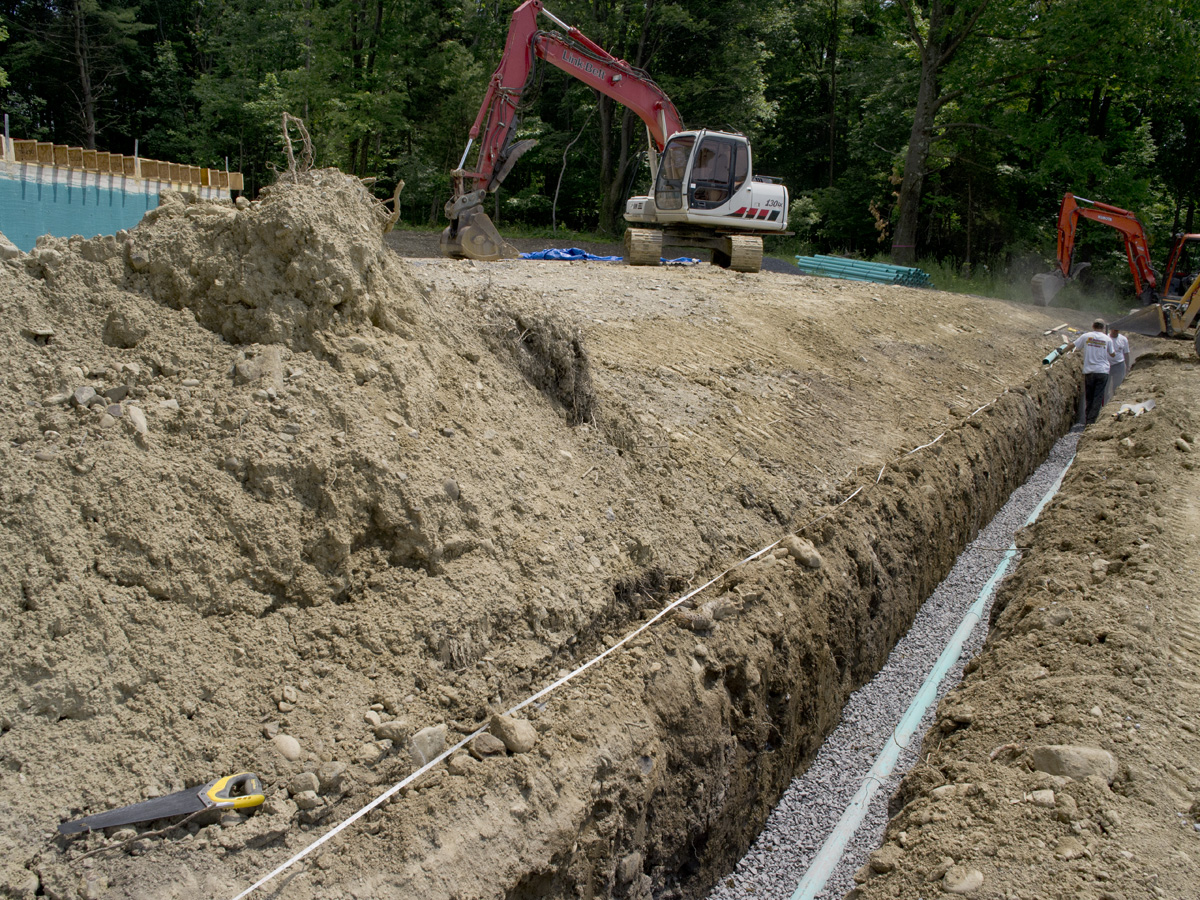 The trench is drained by perforated pipe bedded in stone. The clay soil makes drainage more of a challenge than anyone expected.
The trench is drained by perforated pipe bedded in stone. The clay soil makes drainage more of a challenge than anyone expected.
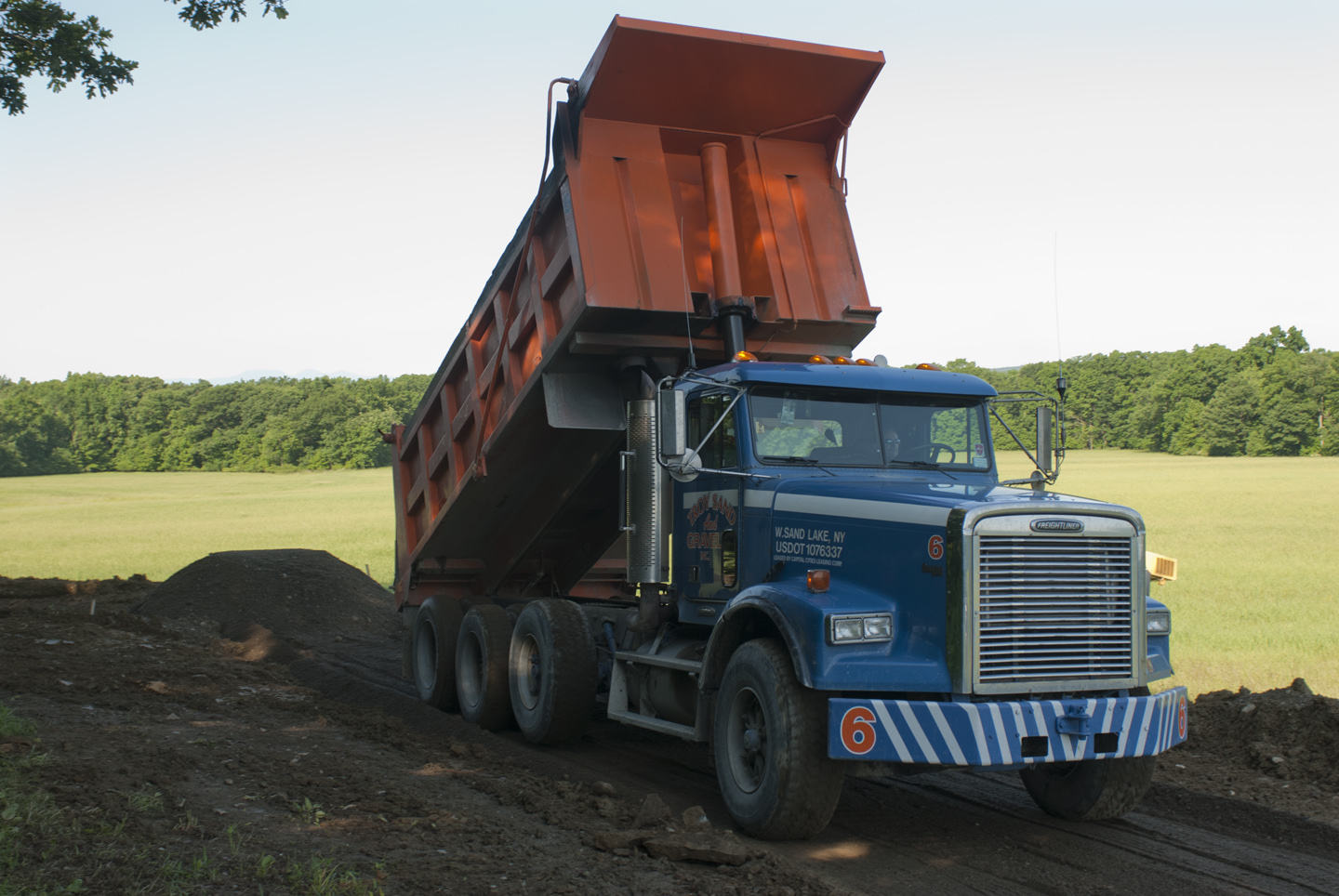 Our soil does not pass the perk test with its very high clay content. We needed to haul in 36 truck loads of gravel that drains adequately and will support our septic distribution.
Our soil does not pass the perk test with its very high clay content. We needed to haul in 36 truck loads of gravel that drains adequately and will support our septic distribution.
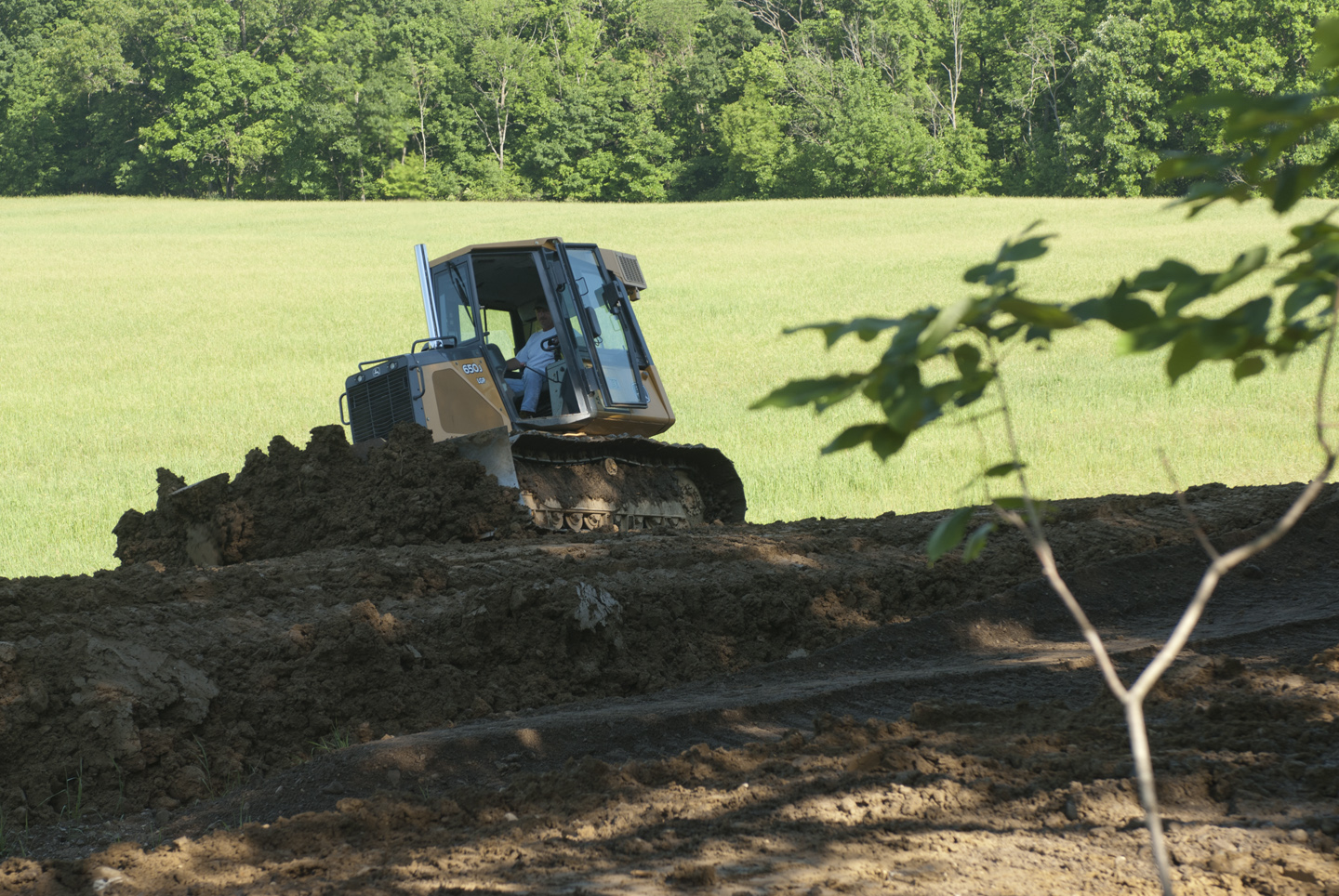 Each load is distributed by Ted on his dozer.
Each load is distributed by Ted on his dozer.
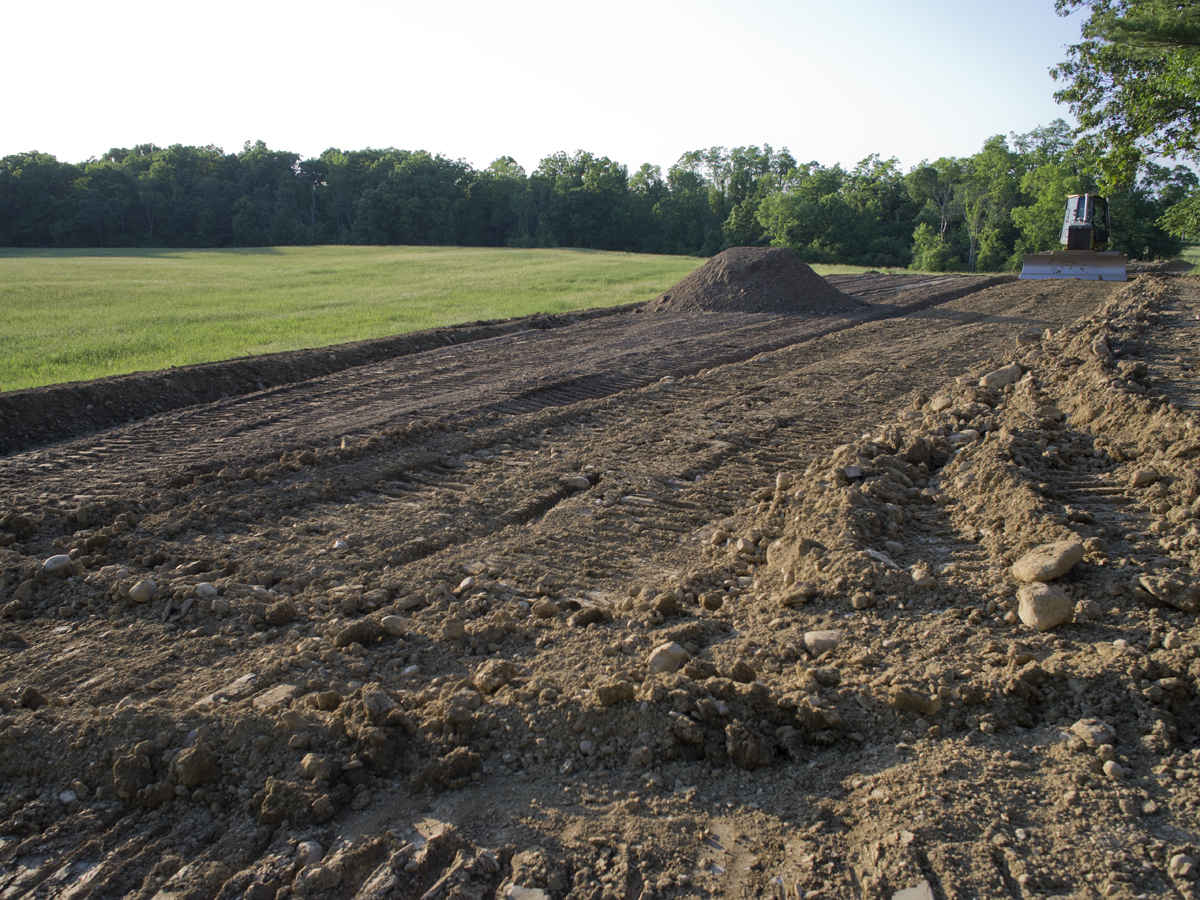 The almost finished raised bed septic field along the front of our hay field. The slightly darker material towards the back is the imported gravel.
The almost finished raised bed septic field along the front of our hay field. The slightly darker material towards the back is the imported gravel.
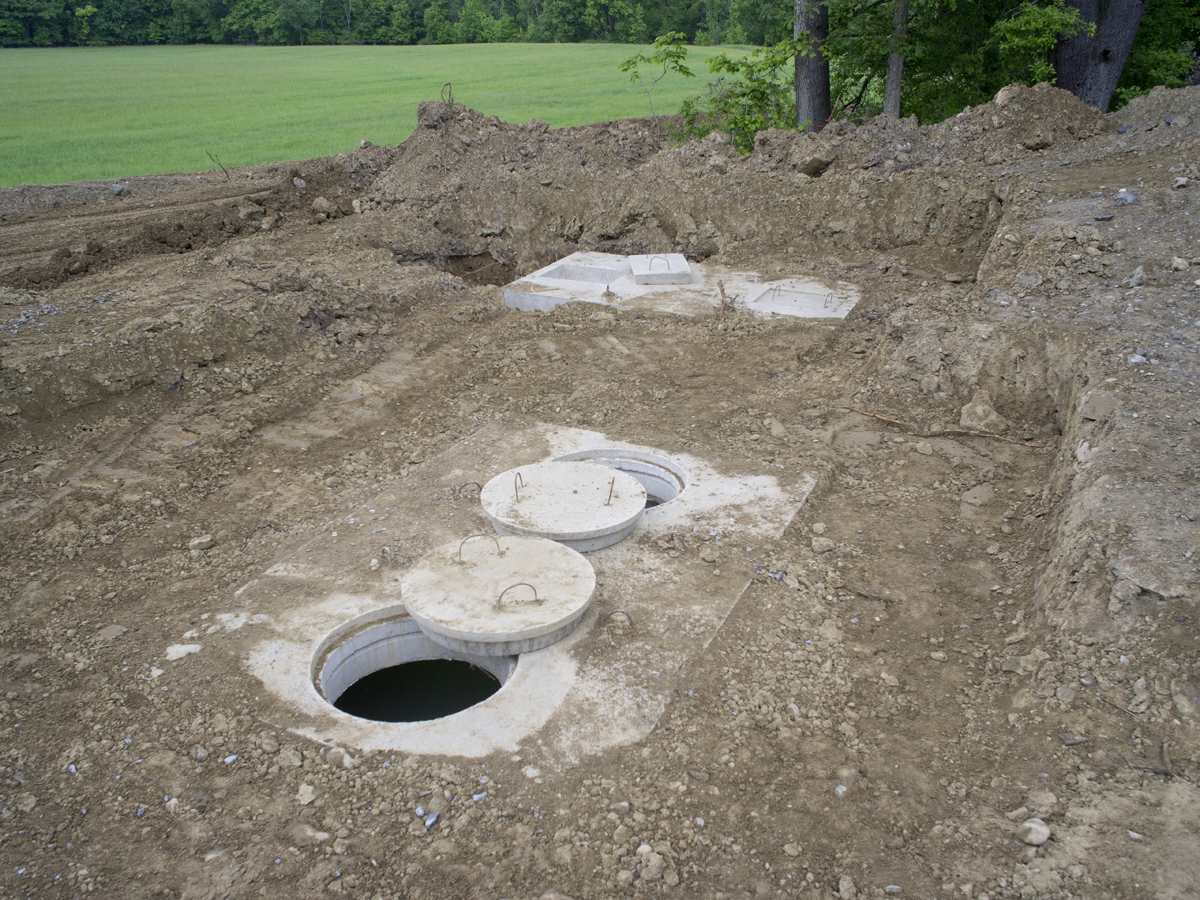 1,000 gallon septic tank (front) and 800-gallon flout dosing system (back)
1,000 gallon septic tank (front) and 800-gallon flout dosing system (back)
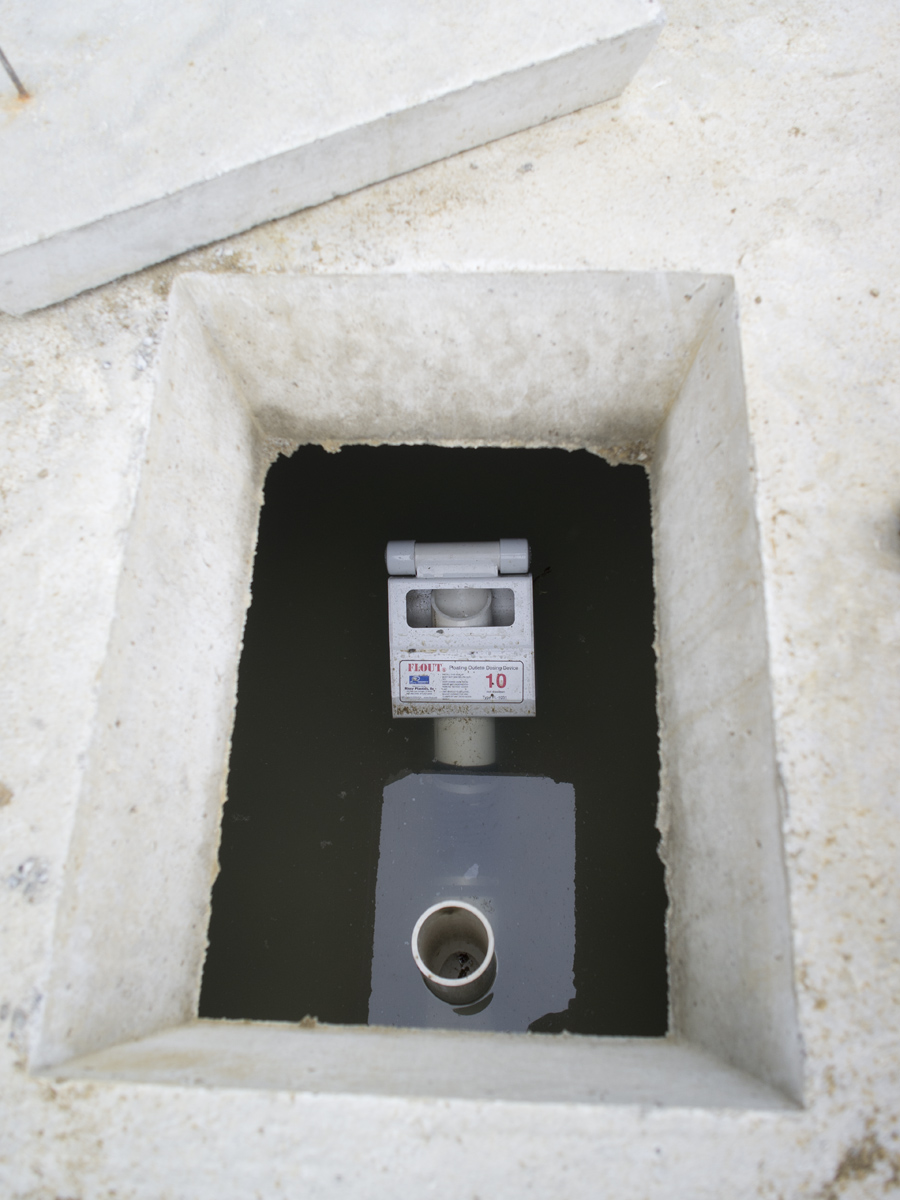 As the water level rises, the flout device rises on a pivot and then flushes the tank into the septic field in a measured dose. The periodic dosing of the field helps the digestion process of the septic field.
As the water level rises, the flout device rises on a pivot and then flushes the tank into the septic field in a measured dose. The periodic dosing of the field helps the digestion process of the septic field.
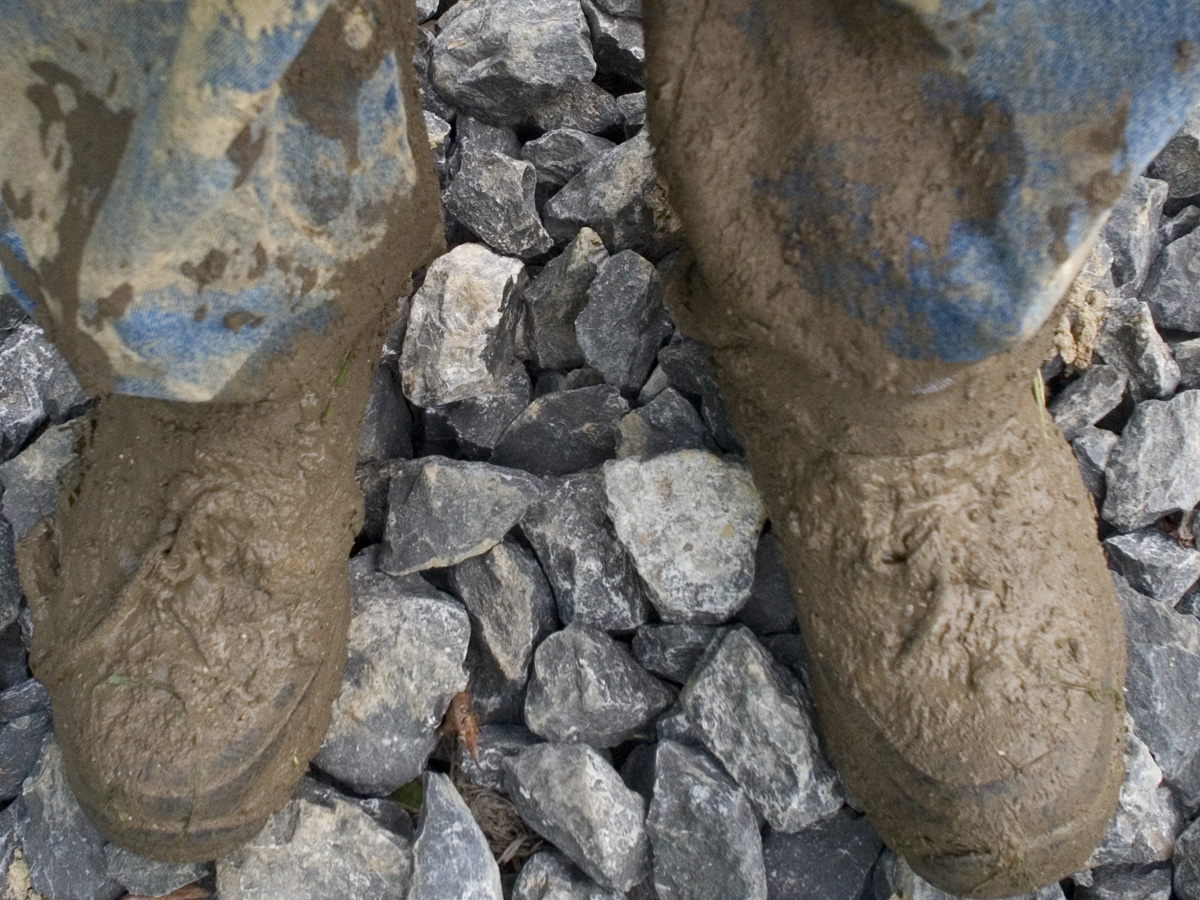 “My muddy boots, my city shoes, I found the note I wrote to you.” My life sounds like a country song. I am on a train from Hudson to New York City, calling Chris on my cell phone. “I found Dad’s tractor directions in my papers. Got a pen? Slip the clutch on the power take off, use the big hole on the hook up, and don’t pound the auger,” I say, relaying my father’s tips to my husband, who was recently granted permission to drive the John Deere on his own. Chris is digging yet more holes for a septic system percolation test.
“My muddy boots, my city shoes, I found the note I wrote to you.” My life sounds like a country song. I am on a train from Hudson to New York City, calling Chris on my cell phone. “I found Dad’s tractor directions in my papers. Got a pen? Slip the clutch on the power take off, use the big hole on the hook up, and don’t pound the auger,” I say, relaying my father’s tips to my husband, who was recently granted permission to drive the John Deere on his own. Chris is digging yet more holes for a septic system percolation test.
We are mired in mud. The soil is saturated from a month of record rainfall, including Hurricane Irene. The first set of perc test pits failed to drain fast enough for us to bury a septic system in the field. The next option, far less attractive both visually and financially, is a raised bed. Columbia County said we can use 18” of the soil and add several feet of sand and gravel to create a big mound. An excavator tells us we can fill and grade and make it blend; an architect warns our hillside will never look natural again. Septic systems range from $8,000 to $35,000 and may or may not involve pumps, sprayers and alarms – including the most unattractive idea of a receptacle in the basement that grinds solids and pumps fluids up and out.
Today Chris will make a last-ditch effort to see if we can bury a system in an alternate location. I will attend meetings and eat lunch at a Japanese restaurant, so I have slipped on my pumps instead of my boots, now coated and cracking clumps of clay.